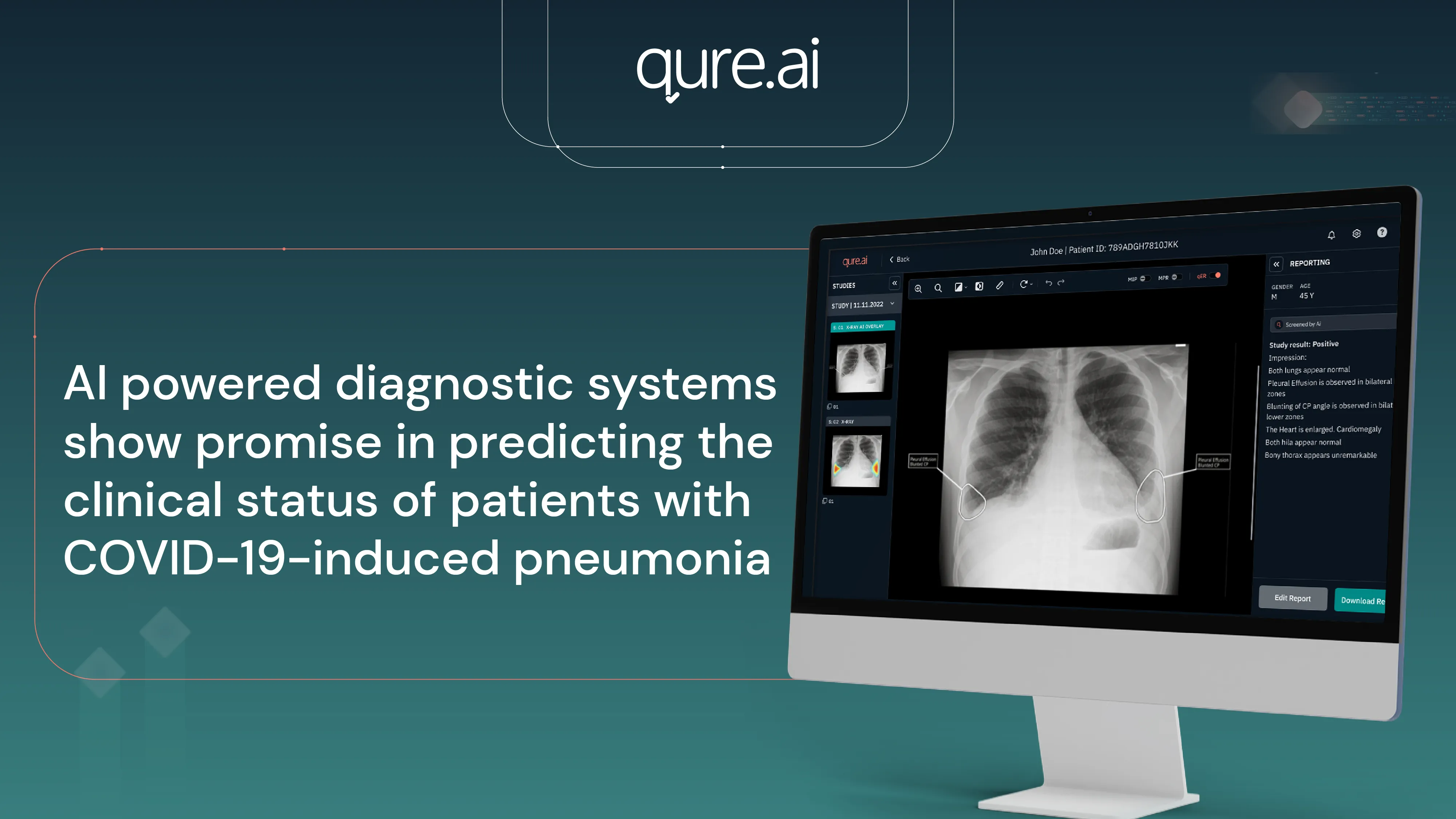The paper summarises the results of a retrospective study of the comparative assessment of Chest X-ray interpretations by Qure.ai’s AI-enabled Chest X-ray solution in comparison to a radiologist and pulmonologist in predicting the clinical status of patients with COVID-19-induced pneumonia.

Back
Dubai, 18 September 2023 – New research published in the Journal of Advances in Radiology and Medical Imaging, underscores the remarkable potential of artificial intelligence (AI) in aiding the diagnosis of COVID-19-induced pneumonia. The study compares the precision of AI-powered chest X-ray interpretations against human clinical expertise.
Pneumonia is a prevalent and severe respiratory disorder with the potential for irreversible lung damage and significant mortality. The timely and accurate diagnosis of the disease is paramount. Chest radiography has long been the gold standard to assess the clinical condition and progress of patients with respiratory disorders, including pneumonia.
This study, led by Consultant Radiologist Usama Al Bastaki and his colleagues, puts into focus Qure.ai's Chest X-ray Algorithm (qXR). The aim was to measure the algorithm's quantitative evaluation against the qualitative judgements of senior radiologists and pulmonologists. The algorithm can identify various radiological findings, including opacities, consolidation, pleural effusions, and more.
Over 535 chest X-rays from 100 COVID-19 pneumonia-afflicted patients were meticulously scrutinized. Each patient was chosen based on having at least one subsequent chest X-ray, which facilitates tracking the evolution of the disease. An important aspect of this research was comparing the AI’s interpretations to human expert conclusions and the ability of the software to predict the trajectory of the disease via multiple assessments of patient health.
“From this research, we know that AI-enhanced diagnostics can expedite the detection of conditions, including critical ones like pneumonia, enabling faster treatment and ultimately saving lives in our hospitals,” said radiologist and lead researcher Dr. Usama Al Bastaki.
“It’s encouraging to see research publications like this validating our belief that AI has the potential to enhance diagnostic precision, prioritize critical cases, and in the future also provide prognostic risk assessment”, said Preetham Putha, Chief AI Officer, Qure.ai.
Key Findings Include:
AI and Radiologist Agreement: The study found a high level of agreement between AI-based interpretations and radiologists, even when clinical data was not provided to the radiologists during assessment.
Predictive Accuracy: The AI-based qXR algorithm demonstrated precise and consistent agreement with radiologists, particularly in cases of patients with deteriorating clinical status.
Subgroup Consistency: The agreement between AI and radiologists remained consistent across different patient characteristics, indicating the robustness of the AI model.
Interestingly, even without access to patients’ clinical data, radiologists' assessments resonated closely with the AI's readings, indicating a lack of bias in their evaluations.
Results from this study suggest that the qXR algorithm by Qure.ai could be instrumental in diagnosing and monitoring Covid-19 pneumonia progression, particularly when there is limited access to radiologists or when they are inundated with cases. The inference is clear: AI has the potential to refine diagnostic accuracy, mitigate errors, and prioritize acute cases in emergency settings.
As we navigate the landscape of modern medicine, this research offers a tantalizing glimpse into an AI-integrated future in radiology, emphasizing its potential to amplify patient care quality and outcomes. Seamlessly integrating AI solutions into clinical workflows can standardize reporting, minimize errors, and prioritize critical cases.